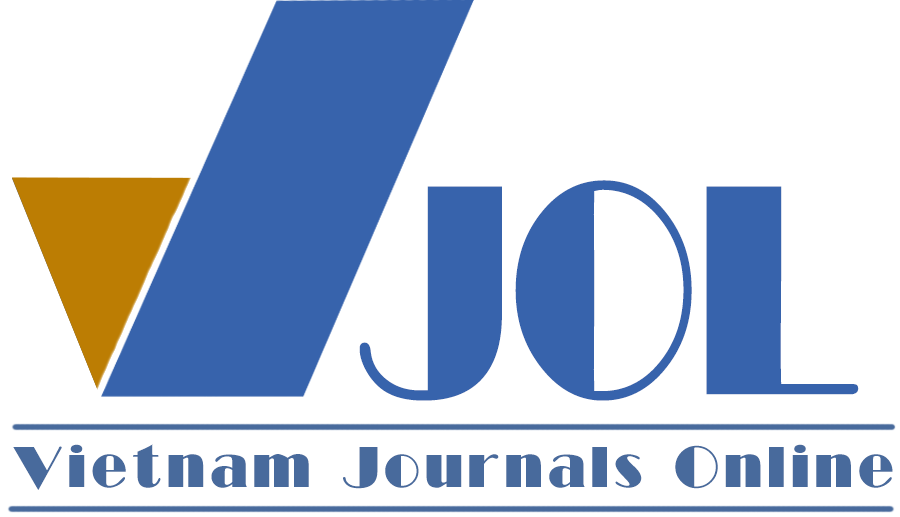Stock crash and how it spreads over the Vietnamese stock market
Authors
DOI: https://doi.org/10.57110/vnu-jeb.v4i3.339Keywords:
Stock crash, spillover mechanism, industry stock returns, TVP-VAR modelReferences
Andreou, P. C., Magidou, M. & Lambertides, N. (2021). Stock price crash risk: A critique of the agency theory viewpoint. Review of Corporate Finance Studies, 10(1),134-165. http://doi.org/10.2139/ssrn.3774424
Antonakakis, N., Gabauer, D., Gupta, R., & Plakandaras, V. (2018). Dynamic connectedness of uncertainty across developed economies: A time-varying approach. Economics Letters, 166, 63-75. https://doi.org/10.1016/j.econlet.2018.02.011
Antonakakis, N., Chatziantoniou, I., & Gabauer, D. (2019). Cryptocurrency market contagion: Market uncertainty, market complexity, and dynamic portfolios. Journal of International Financial Markets, Institutions and Money, 61, 37-51. https://doi.org/10.1016/j.intfin.2019.02.003
Antonakakis, N., Chatziantoniou, I., & Gabauer, D. (2020). Refined measures of dynamic connectedness based on time-varying parameter vector autoregressions. Journal of Risk and Financial Management, 13(4), 84. https://doi.org/10.3390/jrfm13040084
Claessens, S., Kose, M. A. & Terrones, M. E. (2012). The global financial crisis: How similar? How different? How costly? Journal of International Money and Finance, 31(3), 671-688. https://doi.org/10.2139/ssrn.1573958
Dang, T. H. N., Nguyen, N. T. & Vo, D. H. (2022). Sectoral volatility spillovers and their determinants in Vietnam. Economic Change and Restructuring, 56, 681–700. https://doi.org/10.1007/s10644-022-09446-9
Diebold, F. X., Yilmaz, K. (2009). Measuring Financial Asset Return and Volatility Spillovers, with Application to Global Equity Markets. The Economic Journal, 119, 158–171. https://doi.org/10.3386/w13811
Diebold, F. X., Yilmaz, K., (2012). Better to give than to receive: Predictive directional measurement of volatility spillovers. International Journal of Forecasting, 28, 57–66. https://doi.org/10.1016/j.ijforecast.2011.02.006
Diebold, F. X., Yilmaz, K., (2014). On the network topology of variance decompositions: Measuring the connectedness of financial firms. Journal of Econometrics, 182,119–134. https://doi.org/10.1016/j.jeconom.2014.04.012
Hutton, A. P., Marcus, A. J., & Tehranian, H. (2009). Opaque financial reports, R2, and crash risk. Journal of Financial Economics, 94(1), 67-86. https://doi.org/10.1016/j.jfineco.2008.10.003
Jin, L., Myers, & S. C. (2006). R2 around the world: New theory and new tests. Journal of Financial Economics, 79(2), 257-292. https://doi.org/10.1016/j.jfineco.2004.11.003
Mendoza, E. G. & Terrones, M. E. (2008). An anatomy of credit booms: Evidence from macro aggregates and micro data. Journal of International Economics, 76(1), 105-130. https://doi.org/10.3386/w14049
Nguyen, T. D., Dinh, H. T. & Vo, D. T., (2019). Financial contagion in emerging markets: Evidence from the COVID-19 pandemic. Emerging Markets Review, 41, 100-660.
Shen, Y. Y., Jiang, Z. Q., Ma, J. C., Wang, G. J., & Zhou, W.X. (2022). Sector connectedness in the Chinese stock markets. Empir Econ, 62(2), 825–852. https://doi.org/10.1007/s00181-021-02036-0
Yin, K., Liu, Z., Jin, X. (2020). Interindustry volatility spillover effects in China’s stock market. Phys A Stat Mech Appl, 539, 122936. https://doi.org/10.1016/j.physa.2019.122936
Downloads
Additional Files
Published
Abstract View
PDF Downloaded
How to Cite
Issue
Section
License
Copyright (c) 2024 Vu Thi Loan, Luong Ngoc Hai, Nguyen Phuong Nga

This work is licensed under a Creative Commons Attribution-NonCommercial 4.0 International License.
by VNU Journal of Economics and Business






